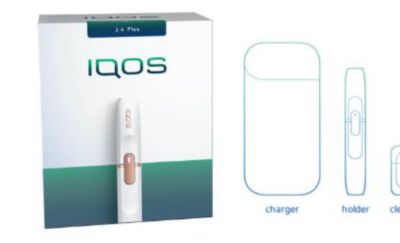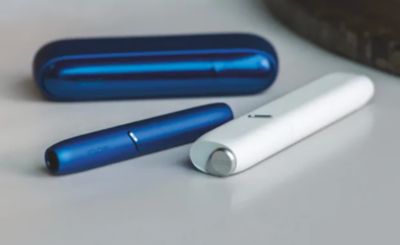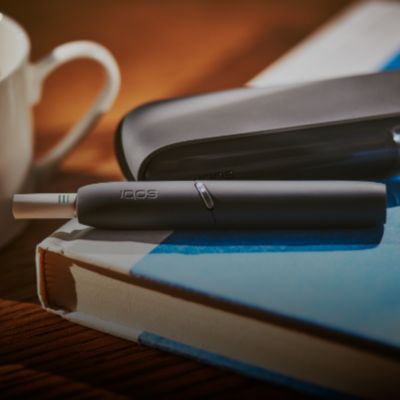A Guide to Vaping
The best choice that any adult smoker can make, without question, is to stop smoking altogether. However, for those who are not ready to, or are unable to, there are a variety of alternatives to smoking available in the UK, like vapes or e-cigarettes. These contain liquids referred to as e-liquids, e-juice or vape juice, which contain water, flavourings, PG and VG, and usually nicotine.
If you’re considering switching to vaping from smoking cigarettes and wondering how to vape, this vape guide covers the fundamentals of vaping. It explains how vaping differs from smoking, the components of a vape, and how different vaping devices work. It also provides an overview of the types of vape starter kits available on the market, outlines the different vaping styles, and describes how e-liquids are produced.
How vaping differs from smoking
If you were to smoke, you would light a cigarette with a flame. The resulting process of combustion from the cigarette burning would then produce smoke, which contains harmful chemicals. Instead, vapes heat an e-liquid to produce vapour, which is then inhaled. There is no combustion involved. Unlike cigarettes, many e-liquids do not contain tobacco. Some specific e-liquids may contain tobacco, but they still won’t produce tobacco smoke when heated.
By eliminating the process of combustion, the vapour produced contains far lower levels of harmful chemicals than cigarette smoke. Whilst not risk free, this presents a better alternative than continuing to smoke.
Components of a vape
All vapes have an atomiser, a coil, a mouthpiece, and a battery. Some vapes will also have a tank that the user can manually fill with e-liquid, while others use pods or cartridges containing pre-filled e-juice, which ‘snap’ onto the device. Tanks hold the e-liquid until it’s drawn up first into the atomiser and then onto the coil. They can vary in size to suit the particular needs of the vaper.
What does an atomiser do?
The term ‘atomiser’ is sometimes used interchangeably with ‘wick’ or ‘coil’ but in reality, these are two parts that make up an atomiser. The wick tends to be made from cotton and is what draws liquid in from the tank onto the coil - the heating element. The coil then heats the e-liquid to make a vapour, also sometimes known as an aerosol. Adult vapers then consume the vapour from the mouthpiece.
Vape batteries and chargers
There are three main types of batteries used in different types of vape devices. Some devices use disposable batteries, some use removable batteries that can be charged externally, while others use integrated lithium-ion batteries that can be recharged by connecting the device itself to a charger.
While the charger is not part of the vape itself, it’s still worth mentioning here as it’s something most vapers will use. Like batteries, there are a few different types of chargers, again depending on the device used. Some vapes are charged via USB chargers – often if the device has an integrated battery – while a power bank will sometimes be used to charge external batteries.
Types of vaping devices
Whilst there is a growing range of vapes and e-cigarettes on the market at varying prices, devices will typically fall into one of the following five categories:
Cigalikes (or ‘cig-a-likes’)
Cigalikes are designed to look as close to a conventional cigarette as possible. These devices are usually small, lightweight and sometimes include a light at the end to replicate the glowing lit end of a cigarette. They can be either reusable or disposable. With cigalikes, features like wattage and temperature cannot be altered.
Pod vapes
A pod vape is an ultra-compact and easy to use two-piece device including a battery and a pod. These devices are available with either closed vape pods or refillable pods. Depending on the specific brand and model of pod vape chosen, these devices may include features such as variable wattage.
Vape pens
Many vape pens are small and thin, featuring a refillable tank and replaceable coils. They’re typically less complex than devices like box mods and usually have a built-in coil that heats the e-liquid to create an aerosol.
Vape pens often have an integrated battery and use a USB charger. They have a tank that can be filled up manually with more e-liquid when it’s empty. Depending on the specific device, this may include the ability to vary the wattage and voltage that the device is used at. We recommend avoiding device modification as it can result in unintended consequences on your device.
Box mods
These devices are larger and generally have more customisable features, with longer battery life and multiple changeable elements, often including wattage and temperature control. Device modification is not recommended.
Vape Starter Kits
Essentially, a vape starter kit is a product containing all the basic equipment vapers need. The specific pieces of equipment included in a vape starter kit vary from brand to brand, but in general, there are a couple of key parts that many manufacturers provide.
You’ll typically get the device itself, a charger, batteries, and - depending on the specific device you’re purchasing - tanks and coils as well. More often than not, you’ll also get a few bottles of e-liquid. Furthermore, your kit should usually come with instructions and documentation to help you get started.
Vape starter kits vary in price, depending on the type and the brand you choose. A simple pen-style vape starter kit is likely to cost between £20 and £30. By contrast, more advanced kits may run to £60 or more. Of course, there are plenty of vape starter kits that are priced somewhere in the middle.
What is E-Liquid?
Vaping devices are used with e-liquids, also referred to as ‘e-juices’ or ‘vape juices’. These liquids are made up of VG (vegetable glycerine), a natural derivative of vegetable oil used to produce dense vapour clouds, PG (propylene glycol), a synthetic additive used to provide flavourings and often nicotine.
Some vaping systems use pods pre-filled with e-liquid. E-liquid comes in the form of a pack of disposable cartridges that you insert into your vaping device and then dispose of once the liquid has been used up.
With other ‘refillable vaping systems’, e-liquids are usually poured directly into refillable pods or the device’s tank. Rather than buying packs of pre-filled e-liquid pods, you will need to keep your device topped up by purchasing new bottles of e-liquid.
E-liquids are available in a variety of nicotine strengths. The nicotine strength of the e-liquid is indicated on the container either as a percentage or displayed in milligrams per millilitre (often shortened simply to ‘mg’).
Vaping Style
When learning about vaping for beginners, it’s important to know things like how do you inhale vapes? There are two core techniques: mouth-to-lung (MTL) and direct-to-lung (DTL).
MTL Vaping
Mouth-to-Lung vaping tends to be better suited to smaller vapes with higher-resistance coils and e-liquids with higher nicotine levels. Less vapour is produced and it generally feels similar to smoking, feeling tight and giving the same sort of hit to the throat as the act of smoking a cigarette.
To do this, draw vapour into your mouth for a few seconds before holding it in your mouth for a couple of seconds and then opening your mouth. Breathe the vapour into your lungs, and then exhale once you’ve done so.
DTL Vaping
Direct-to-lung vaping is a better fit for those who use larger vape devices with lower-resistance coils and a lower level of nicotine. DTL vaping can feel harsher on the throat than MTL vaping. For DTL vaping, quickly draw the vapour to your lungs directly, and then exhale almost straight away.
Hopefully, you should now be clearer on what vaping is and how to vape.
This article is for general information and educational purposes. Some of the information in this article is based on external, third-party sources and we make no representations or warranties of any kind regarding the accuracy, validity or completeness of such information.













